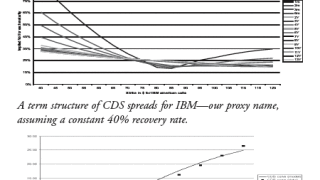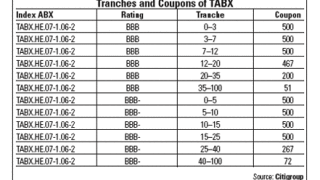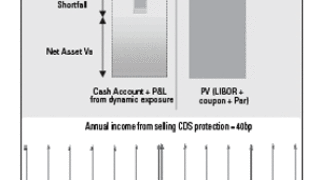Learning Curve
-
The second part of this Learning Curve describes results from a model recently published by Claudio Albanese and Alicia Vidler from the department of mathematics at Imperial College, London.
-
This Learning Curve describes a model recently published by Claudio Albanese and Alicia Vidler from the department of mathematics at Imperial College, London.
-
Many investors are already familiar with tranched investments in home equity loan backed-securities portfolios via asset-backed securities collateralized debt obligations CDOs (ABS CDOs), or other corporate tranched markets such as iTraxx and CDX.
-
The first wave of constant proportion debt obligations takes exposure to only the on-the-run iTraxx and CDX indices.
-
Last year proved to be another break-through year for structuring fund-linked investment products in the U.S. Guidance from the Securities Exchange Commission, along with historic U.S. pension fund reforms, allowed dealers to structure closed-end fund-of-funds platforms that offer both institutional and retail investors leveraged access to single-manager hedge funds.
-
A collateralized commodity obligation consists of commodity risk repackaged into a synthetic CDO structure.
-
The over-the-counter interest-rate and currency derivatives market has continued to experience spectacular growth.
-
Common market best practice for pricing off-the-run or bespoke collateralized debt obligation tranches involves mapping implied base correlation surfaces calibrated from actively traded tranches such as those on the CDX or iTraxx.
-
Benign monetary policy in mature market countries and high liquidity-induced demand have put a premium on the risk diversification of alternative asset classes outside of conventional investment, such as emerging market equity.
-
Last week's Learning Curve introduced the gamma model as a replacement to the base correlation approach.
-
The standard market model for pricing collateralized debt obligations is base correlation, but it suffers from known problems.
-
Leveraged certificates or knock-out products were introduced in Europe about four years ago and contribute to a substantial part of the total daily volume of structured product trading.



